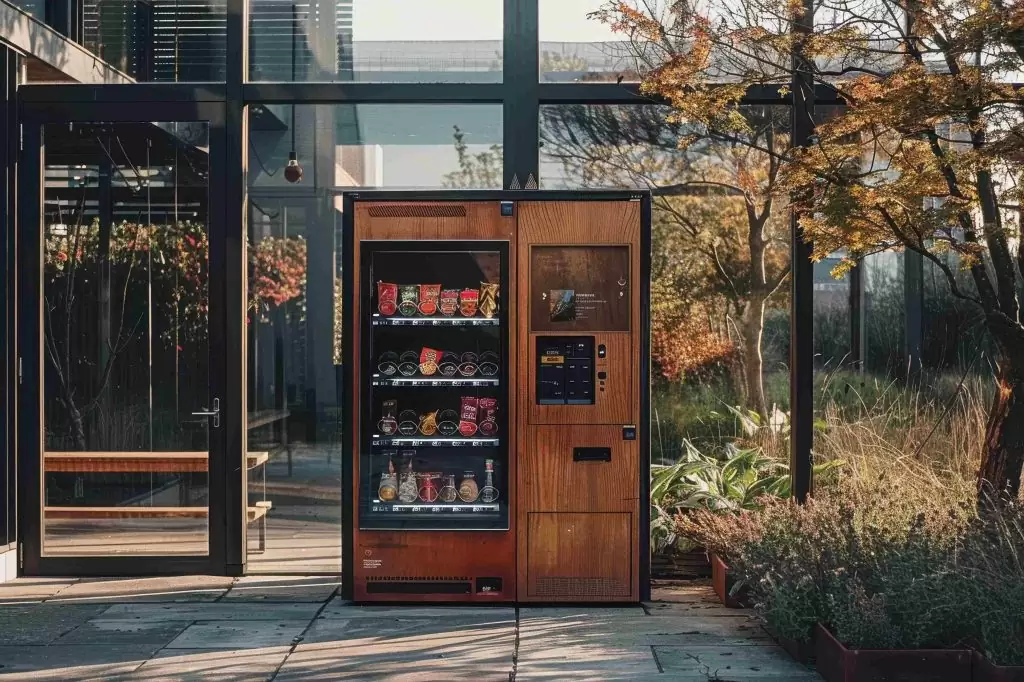
Image Source: Adobe Stock
What are the global implications and takeaways for vending operators?
The vending machine market in Europe is expected to grow from $18.6 billion in 2023 to $40.26 billion by 2032, reflecting a CAGR of 8.96%, according to a new report released by Research and Markets. While Europe may be known for slower-paced lifestyles compared to their American counterparts, this growth is fueled by changing consumer habits. Europe’s increasingly fast-paced lifestyles are driving demand for convenient, on-the-go food and beverages, especially coffee.
Current State of Vending in Europe
Most vending machines in Europe are located in businesses and offices, with many also found in public spaces such as airports and bus stops. Recent trends include the rise of bean-to-cup espresso machines, which provide premium coffee options and are replacing traditional hot beverage machines. While filter coffee is declining in popularity, coffee beans and capsules remain in demand. In the UK, for instance, office coffee consumption has grown significantly in recent years.
Global Trends
There is a growing global need, according to the report, for vending machines. There are a few reasons for this:
- Consumers Desire Convenience: Vending machines offer simple, fast transactions and 24/7 access.
- Expansion of Commercial Venues: Hotels, retail stores, and factories rely on vending machines to serve customers. As more are built, more vending machines are required.
- Sustainability Initiatives: Reverse vending machines are gaining traction, which encourages recycling by rewarding users with incentives like shopping credits.
- Urbanization: Urbanization is creating a spike in demand for vending machines, especially in public spaces like offices.
- Technological Advancements: Features like cashless payments, interactive displays, IoT integration, and speech recognition improve user experiences.
- Improved Customer Service: Better customer feedback options are available now, creating a user-friendly shopping experience that positively reinforces using the vending machines again.
Countries to Watch: Italy and France
Italy leads the European market with the highest number of vending machines and the largest revenue share. These vending machines are attracting weekly grocery shoppers, purchasing standard items such as prepackaged bread, fruit drinks, chocolate bars, and salami. Premium coffee vending machines are likely to increase, the report predicts, due to consumers wanting freshly ground coffee upon payment. In general, commercial spaces in Italy are witnessing a surge in vending machine installations.
France may be another country to watch as research indicates vending machine adoption may increase significantly, due to their fresh food industry. Fresh and hot food vending machines are becoming more and more popular, so many public and commercial settings — even banks — are increasing in demand.
Industry Leaders to Watch
Major players in the European vending machine market include Honeywell International, Azkoyen, ventopay, Aramark Corporation, and Nayax Ltd. These companies are enhancing consumer experiences and assisting in the growth of the vending machine market in Europe.
Takeaways for Operators Globally, Especially in America
With advancements in technology and shifting consumer preferences, vending machines are set to play an increasingly important role in the food and beverage sector, not just in Europe. What should operators globally be doing?
- Invest in Bean-to-Cup Machines: Bean-to-cup espresso machines aren’t going away. Consider finding one you love after careful consideration, rather than scrambling to adopt it later.
- Consider Public Spaces: Public settings like bus stops, subways, and libraries are untapped opportunities in many U.S. cities. Urbanization trends suggest these spaces could drive growth.
- Incorporate Sustainability Features: Reverse vending machines promoting recycling have gained traction in Europe. Implementing such machines could align with eco-conscious American consumers and provide additional incentives, such as discounts or rewards for food or beverages in micro markets.
- Embrace Technology: Features like cashless payments, IoT integration, and interactive displays improve convenience and attract tech-savvy customers. Investing in these innovations can differentiate your vending business from competitors.
- Diversify Offerings: Beyond snacks and drinks, European vending machines increasingly offer fresh food, groceries, and even household essentials. Broadening product categories could meet evolving consumer needs and increase machine usage.
By learning from Europe’s success, American vending machine businesses can position themselves to thrive in a rapidly evolving market.















